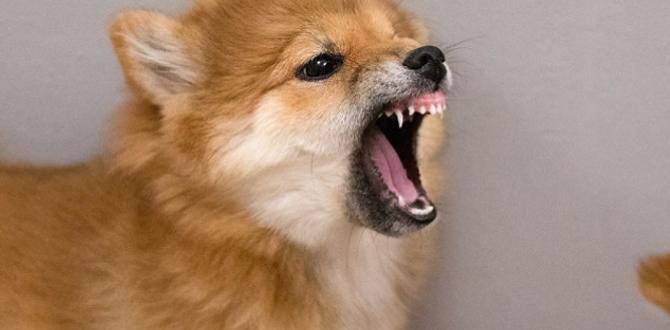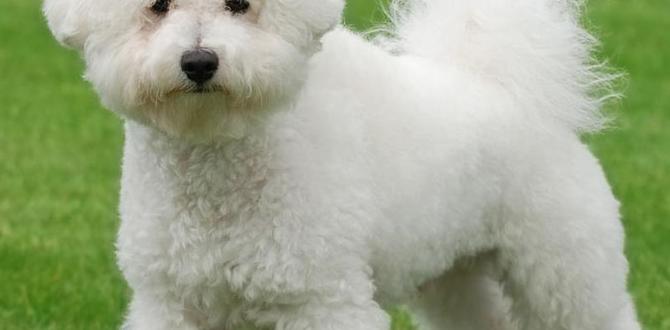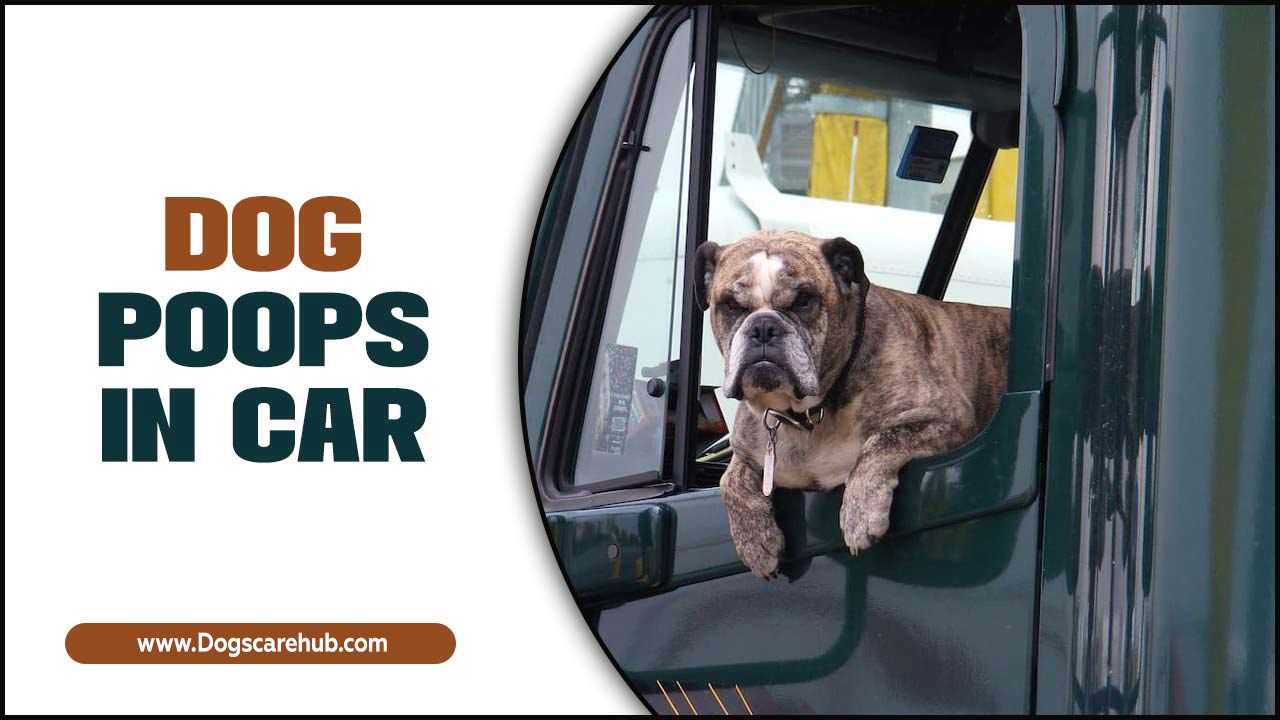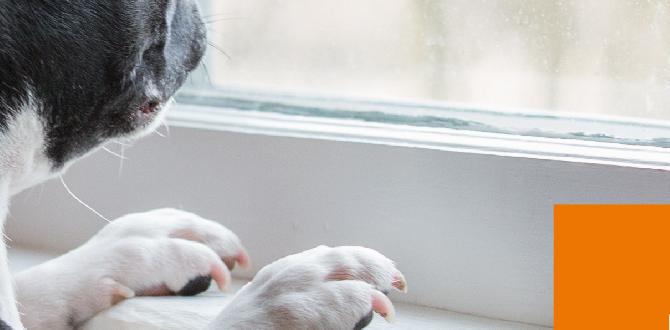Imagine you’re in your living room. Your adorable puppy darts around, full of energy. One moment, he’s playing with a toy. The next, he’s chewing on your favorite shoe! You may wonder, “Why is my puppy acting this way?”
Aggressive puppy training may seem like a tough task, but it’s not impossible. Many new puppy owners feel overwhelmed when their little one doesn’t listen. You are not alone! A lot of people ask, “How can I train my puppy to behave?”
Did you know that puppies learn best through fun and love? Imagine training your puppy while playing games. It can turn a challenging moment into a fun adventure for both of you!
In this article, we will explore easy and effective ways to train your pup. Let’s transform that boundless energy into good behavior with the right approach. Ready to start your journey in aggressive puppy training? Let’s dive in!
Effective Strategies For Aggressive Puppy Training Tips

Understanding Aggressive Puppy Training
Aggressive puppy training focuses on stopping unwanted behaviors immediately. Did you know that early socialization is key? It helps reduce fear and anxiety. Using positive reinforcement encourages good behavior. For example, rewarding calmness can be more effective than punishment. Have you ever seen a puppy bark at nothing? Teaching them how to react calmly is essential. Remember, patience is crucial. Consistency helps your puppy feel secure and learn faster!Understanding Aggression in Puppies
Types of aggression: territorial, fearbased, and play aggression. Common signs and triggers of aggressive behavior in puppies.Understanding puppy behaviors is essential for training. Puppies can show aggression for various reasons. The main types are territorial, fear-based, and play aggression. Territorial aggression happens when a pup feels the need to protect its space. Fear-based aggression occurs when a puppy feels scared and lashes out. Play aggression can appear funny but may lead to nips or bites during playtime.
| Type of Aggression | Common Signs | Triggers |
|---|---|---|
| Territorial | Barking, growling | Strangers, other pets |
| Fear-based | Tucked tail, backing away | Loud noises, sudden movements |
| Play | Nipping, rough play | Excited playtime, chasing |
Watch for these signs to help your puppy feel safe and happy. Remember, even a tiny pup can show some big feelings! It’s all part of their growth.
Foundational Training Techniques
Importance of socialization and exposure to various environments. Basic commands to establish authority and communication.Training your puppy is like teaching a toddler—lots of fun and some silly moments! Socialization is key. It helps your puppy meet new friends and discover different places. Think of it like puppy school on a field trip! Basic commands establish your role as the leader. Commands like “Sit!” and “Stay!” create clear communication. Each successful command makes your puppy feel smart. Plus, a well-trained puppy can impress friends and family.
| Command | Importance |
|---|---|
| Sit | Helps control excitement. |
| Stay | Keeps your puppy safe. |
| Come | Brings your puppy back to you. |
Recognizing the Role of Environment
Creating a safe and structured space for your puppy. How your daily routines influence puppy behavior.Creating a safe and structured space for your puppy is important. A calm home helps them feel secure. Use a cozy bed, toys, and a few safe areas for play. Your puppy will thrive in a place where they know the rules.
Your daily routines also shape puppy behavior. Consistency is key. Regular feeding times and walks teach your puppy what to expect. When they know what comes next, they feel safe and happy.
How does a routine affect a puppy’s behavior?
A routine helps your puppy learn and feel secure. Just like us, puppies like to know what happens next. Regular meals, playtime, and naps build trust and stability.
Tips for a Better Routine:
- Feed at the same time each day.
- Go for walks at regular intervals.
- Set aside time for training and fun.
Positive Reinforcement Strategies
Using treats and praise to encourage good behavior. Techniques for redirecting aggressive behavior positively.Using treats and praise is a fun way to train your puppy! Positive reinforcement teaches them what to do. When they behave well, reward them with a yummy treat or some loving words. This makes them want to repeat good behavior. Redirecting aggressive actions is also important. Instead of scolding, try these tips:
- Offer a toy to distract them.
- Use commands like “sit” to change focus.
- Engage them in play with friends.
These techniques help your puppy learn and grow in a safe, happy way.
How can I reward my puppy for good behavior?
You can reward your puppy by giving them a treat, affection, or praise. Positive actions encourage them to keep being good!
Addressing Aggressive Triggers
Identifying and evaluating the triggers for your puppy’s aggression. Specific techniques to manage and mitigate responses to triggers.Understanding what makes your puppy snap is key to training. Look for things that set them off. These can be loud noises, other dogs, or even people in funny hats! Identifying these triggers helps you understand your furry friend better. Once you know their buttons, you can work on calming their reactions.
Here are some techniques to help with training:
| Trigger | Technique |
|---|---|
| Loud Noises | Use toys to distract them. |
| Other Dogs | Practice walking at a distance. |
| Strangers | Reward calm behavior with treats. |
Always stay patient. Remember, even the toughest pup can learn! After all, even the best comedians had to practice their jokes a thousand times before they got on stage!
Working with Professional Trainers
When to consider professional help for aggressive behaviors. The benefits of group classes versus oneonone training sessions.Sometimes, your puppy needs extra help. If your puppy shows signs of aggression, like growling or biting, it’s wise to consult a professional trainer. They can teach you and your puppy important skills.
Group classes offer great benefits. Puppies learn to socialize with others. This can reduce aggressive behavior. One-on-one sessions provide focused training. You can address specific issues. Here’s a quick look:
- Group Classes: Excellent for social skills.
- One-on-One Sessions: Target specific problems.
Both methods can help your puppy feel more secure and happy.
When should you seek help from trainers for aggressive puppy behaviors?
Consider professional help when your puppy shows severe aggression. This can include lunging or snapping at people or other pets. Early intervention is key to changing behavior.
Benefits of Group Classes
Group classes help puppies learn with others in a safe space. This encourages socialization and teamwork. Owners can also share experiences and learn together, making it fun!
Consistency and Patience in Training
The importance of a consistent training schedule and techniques. Staying patient and understanding that progress takes time.Training a puppy is like teaching a toddler to tie their shoes: it takes time and patience! Setting a regular training schedule helps your puppy learn better. It’s like saying, “Hey, it’s time to learn!” at the same time every day. Remember, little paws don’t understand commands overnight. Staying calm and steady is key. Perhaps at times, you may feel like a broken record, but don’t worry! Consistency makes progress. So keep smiling, and don’t forget the treat! Every little step counts.
| Training Tip | Benefit |
|---|---|
| Daily Training | Improves learning and behavior |
| Short Sessions | Keeps pup engaged and happy |
| Positive Reinforcement | Builds trust and understanding |
Monitoring Progress and Adjustments
Keeping a training log to track changes in behavior. Adjusting training methods based on the puppy’s response and growth.Tracking your puppy’s training is very important. A training log helps you notice changes in their behavior. You can write down what works and what doesn’t. This way, you can see their progress. If your puppy reacts badly to a method, it’s time to change it. Adjust your training based on how your puppy grows. Every puppy learns at their own pace.
- Keep notes on their progress.
- Change methods if needed.
- Celebrate small wins.
How do I track my puppy’s progress?
Use a diary to note their behavior each day. It helps you see patterns and make changes that fit your puppy’s needs.
Conclusion
In conclusion, aggressive puppy training is all about understanding your dog’s behavior and using positive methods. You should stay calm, be consistent, and reward good actions. This helps build trust and strengthens your bond. Remember, patience is key. For more tips, check out resources on puppy training. Together, we can help our pups grow into well-behaved companions!FAQs
What Are The Most Effective Techniques For Managing Aggressive Behavior In Puppies During Training Sessions?To manage aggressive behavior in puppies, stay calm and confident. Use treats to reward good behavior. If your puppy gets too excited, take a short break. Teach them commands like “sit” or “stay” to focus their energy. Always be patient and keep practicing!
How Can Socialization With Other Dogs And People Help Reduce Aggression In Puppies?Socializing puppies with other dogs and people helps them feel safe and happy. When you let them play with other dogs, they learn how to act around them. Meeting new people teaches them not to be scared. This makes them relaxed and less likely to act aggressively. Remember, a friendly puppy is a happy puppy!
What Role Does Positive Reinforcement Play In Training An Aggressive Puppy?Positive reinforcement helps train an aggressive puppy by rewarding good behavior. When you give treats or praise for calm actions, your puppy learns that being nice gets good things. This makes your puppy want to act nicer more often. It helps build trust between you and your puppy, making training easier and more fun. Remember, being kind helps everyone!
When Should A Puppy Owner Seek Professional Help For Training An Aggressive Puppy, And What Qualifications Should They Look For In A Trainer?You should get help if your puppy growls, bites, or seems very scared. A trainer can teach you how to keep your puppy safe. Look for trainers with good experience and positive reviews. They should use friendly training methods, not harsh ones. It’s important that they love dogs and want to help you both.
What Common Mistakes Should Be Avoided When Training A Puppy That Exhibits Aggressive Tendencies?When training a puppy that shows aggressive behavior, avoid using punishment. Hitting or yelling can make the puppy more scared or angry. Don’t ignore the problem; this can make things worse. Instead, focus on teaching good behavior with rewards. Always be patient and consistent in your training.
Meet Elyse Colburn, the devoted canine companion and storyteller behind the enchanting world of “Tales, Tails, and Adventures Unleashed.” A passionate dog enthusiast with a heart full of paw prints, Elyse Colburn shares heartwarming tales and insightful adventures, celebrating the joy, loyalty, and endless antics that make every dog a true hero. Join Elyse Colburn on this tail-wagging journey, where every post is a love letter to our four-legged friends.








